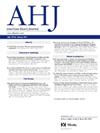Obicetrapib Alone and in Combination with Ezetimibe Reduces Atherosclerotic Lesion Prevalence, Size and Severity in ApoE*3-Leiden.CETP Mice
IF 3.7
2区 医学
Q1 CARDIAC & CARDIOVASCULAR SYSTEMS
引用次数: 0
Abstract
Background and Aims: Obicetrapib is a selective, potent, cholesteryl ester transfer protein (CETP) inhibitor in clinical development for the treatment of hypercholesterolemia and reduction of cardiovascular risk. It strongly reduces apolipoprotein B (ApoB) and low-density lipoprotein cholesterol (LDL-C) and increases plasma high-density lipoprotein cholesterol (HDL-C). Ezetimibe is a potent, selective inhibitor of biliary and dietary cholesterol absorption from the small intestine, also reducing LDL-C levels. The current study evaluated the effect of obicetrapib monotherapy and in combination with ezetimibe on atherosclerosis development in a mouse model for hyperlipidemia and atherosclerosis.
Methods: Female ApoE*3-Leiden.CETP transgenic mice were fed a Western diet with 0.05% w/w cholesterol (equivalent to daily human intake) or this diet containing obicetrapib alone (2 mg/kg/day), ezetimibe alone (on average 0.6 mg/kg/day), or the combination of obicetrapib and ezetimibe. After 28 weeks of treatment, atherosclerosis development was measured in the aortic roots.
Results: Obicetrapib, ezetimibe, and the combination reduced total plasma cholesterol levels (-31%, -19% and -53%), mainly attributed to a decrease in non-HDL-C levels (-53%, -19% and -75%). Obicetrapib and combination treatment nearly completely blocked CETP activity (-98% and -98%). Obicetrapib, ezetimibe, and the combination reduced atherosclerotic lesion size (-90%, -50% and -98%) and reduced severe lesions (-82%, -31% and -98%). The percentage of unaffected segments was increased by obicetrapib and the combination treatment (+347%, +442%).
Conclusions: Obicetrapib alone and the combination with ezetimibe robustly lowers non-HDL-C levels and impedes atherosclerosis development through a large decrease in atherosclerotic lesion size and severity.
求助全文
约1分钟内获得全文
求助全文
来源期刊

American heart journal
医学-心血管系统
CiteScore
8.20
自引率
2.10%
发文量
214
审稿时长
38 days
期刊介绍:
The American Heart Journal will consider for publication suitable articles on topics pertaining to the broad discipline of cardiovascular disease. Our goal is to provide the reader primary investigation, scholarly review, and opinion concerning the practice of cardiovascular medicine. We especially encourage submission of 3 types of reports that are not frequently seen in cardiovascular journals: negative clinical studies, reports on study designs, and studies involving the organization of medical care. The Journal does not accept individual case reports or original articles involving bench laboratory or animal research.
 求助内容:
求助内容: 应助结果提醒方式:
应助结果提醒方式:


